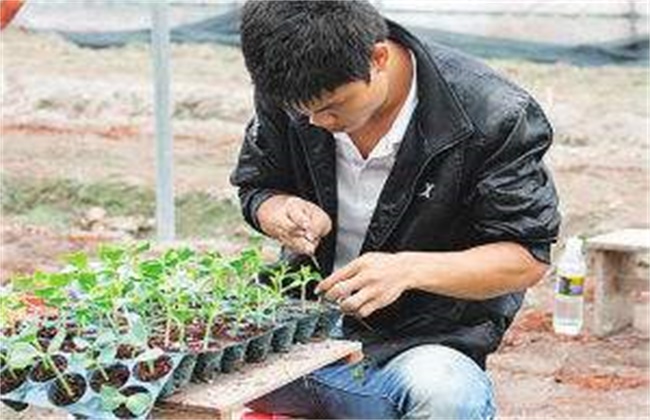Management and precautions of bitter gourd after grafting
In recent years, balsam pear grafting has been used more and more mature, the survival rate is also very high, which can effectively isolate continuous cropping obstacles, reduce the incidence of diseases and insect pests, but also increase yield. But the management after grafting is also very important. Besides whether the grafting technology is skilled or not, the key lies in the management after grafting. Let's take a look at the management and matters needing attention after grafting with the editor.

1. Seedbed treatment
Before grafting, we should first do a good job in disinfecting the seedling bed, so that grafting is the greatest possibility to reduce the occurrence of diseases and insect pests. When grafting, the grafted plant should be placed on the seedling bed immediately, and the seedling bed should be watered and harvested with shade at the same time. After the seedling bed is full, the plastic film can be inserted and buckled on the seedling bed, and the plastic film shall not be breathable and leaking.
2. Temperature and humidity control
The wound healing after grafting needs to maintain the environmental conditions such as temperature, humidity and work, within a few days after grafting, because the transport tissue can not transport nutrients and water normally, and the roots absorb nutrients can not be transported to the stems and leaves. In case of strong light exposure, it is very easy for the leaves to lose water due to transpiration, and shade is needed at this time, and then gradually see the light, so that the scion can slowly adapt to the living environment after grafting. Generally, after 10 days of grafting, the daytime temperature can be raised to 30 degrees for high temperature seedling refining, and then the fake live seedlings can be eliminated in time.
3. Sprouting and cutting off the ear root
After a week of grafting, if the terminal bud of the rootstock is not completely eradicated, it can germinate. These adventitious buds compete with the scion for nutrients, which will not only affect the survival and development of the scion, but also if the germination is not removed in time and the bud is too long. Assimilation substances will also be transported to the plant, resulting in poor quality. Therefore, the sprouting of the rootstock should be wiped out in time. If grafting is adopted, root cutting of the scion will be considered after grafting. The method is to pinch the hypocotyls 1 cm below the grafting interface 7-10 days after grafting to see whether the scion is wilting or not. When the scion wilts, cut off the scion hypocotyls 1 cm below the grafting interface.
4. Points for attention
In addition to disinfecting the seedbed before grafting, it is also necessary to spray fungicides on rootstocks and scions to avoid wound infection, resulting in decay and death. In addition, in the grafting is the rootstock and scion plants can not be stained with water droplets and dirt, which may also lead to grafting failure. When dealing with the interface, the incisions of rootstocks and scions should be aligned, must not be misplaced, and should be kept free of soil and foreign bodies, and some should be gently wiped off with toilet paper or cotton balls. Grafting should be carried out in a suitable environment, with grafting, planting, watering and plastic film. When planting grafted seedlings, it is appropriate to pay attention to the planting depth that the grafting interface is 3-4 cm higher than the ground, so as to avoid adventitious roots in contact with the soil, thus losing the significance of grafting.
The above is the introduction of balsam pear grafting management and points for attention, hope to help you, want to know more related knowledge, please pay attention to us.
Related
- Where is it suitable to grow horseradish in China? it is expected to see the middle altitude horseradish in Alishan.
- How to prevent tomato virus disease reasonably? (Control methods included)
- Many people like to plant towel gourd on the balcony. What are the main points of this method and management?
- What crops can chili peppers be mixed with?
- Fertilization techniques and matters needing attention in Tomato
- What are the grafting techniques for peach seedlings in spring?
- Harm and control methods of root swelling disease of Chinese cabbage
- What are the pests of sweet potatoes? How to prevent and cure it?
- Symptoms, causes and Control methods of navel Rot in Tomato
- The cause of "Cucumber rotten bibcock" in Farmers' planting Cucumber and its Control Plan



